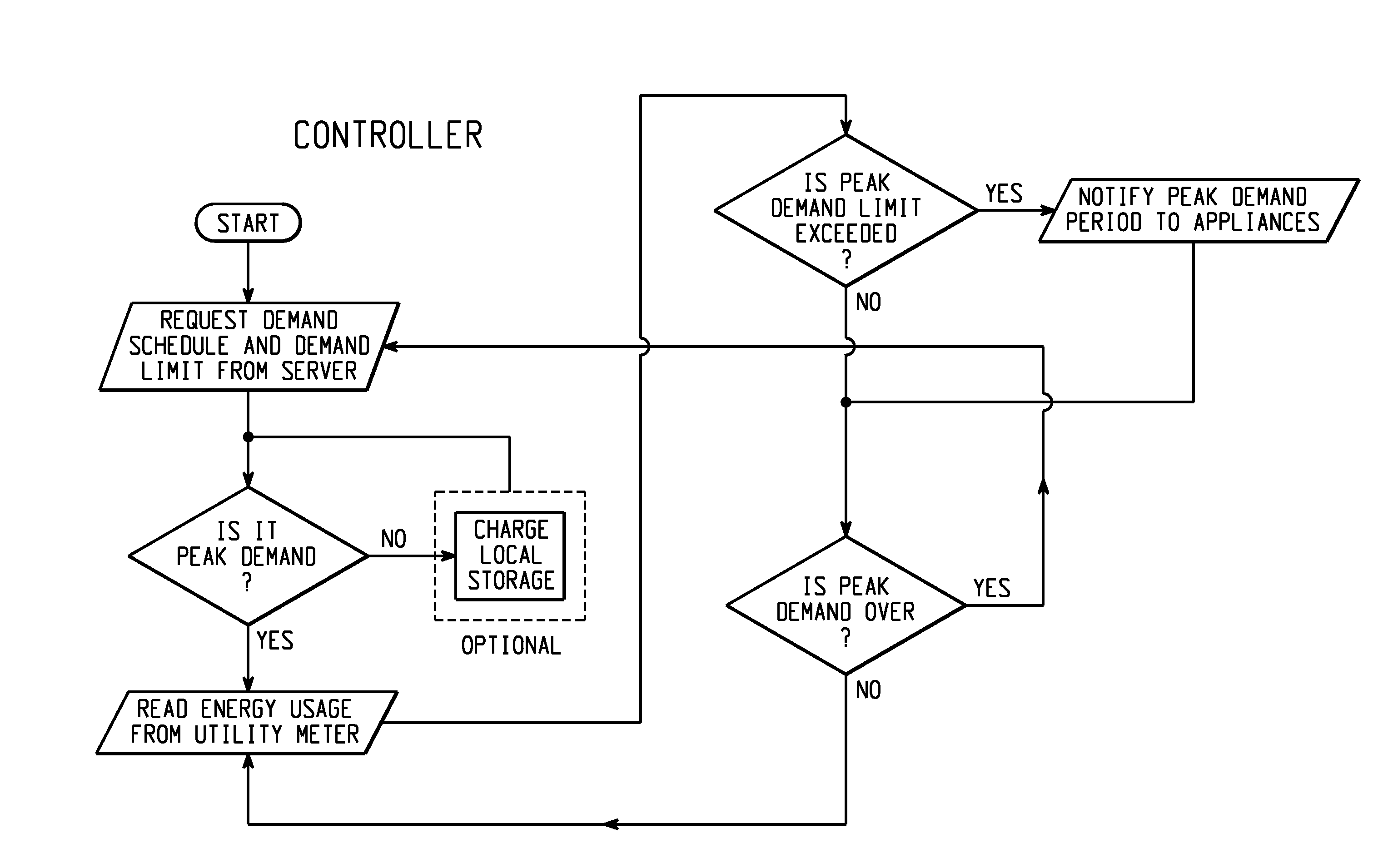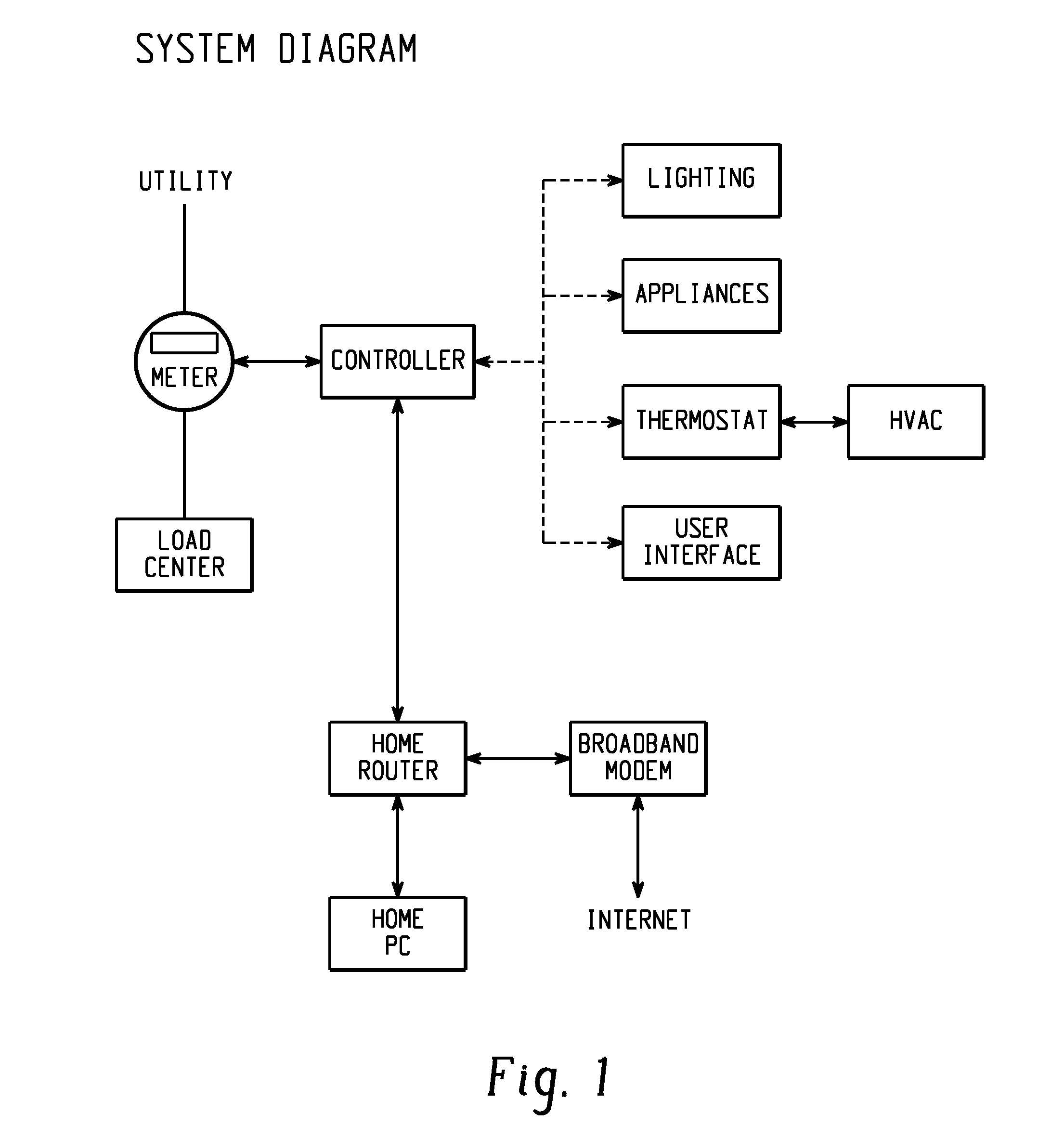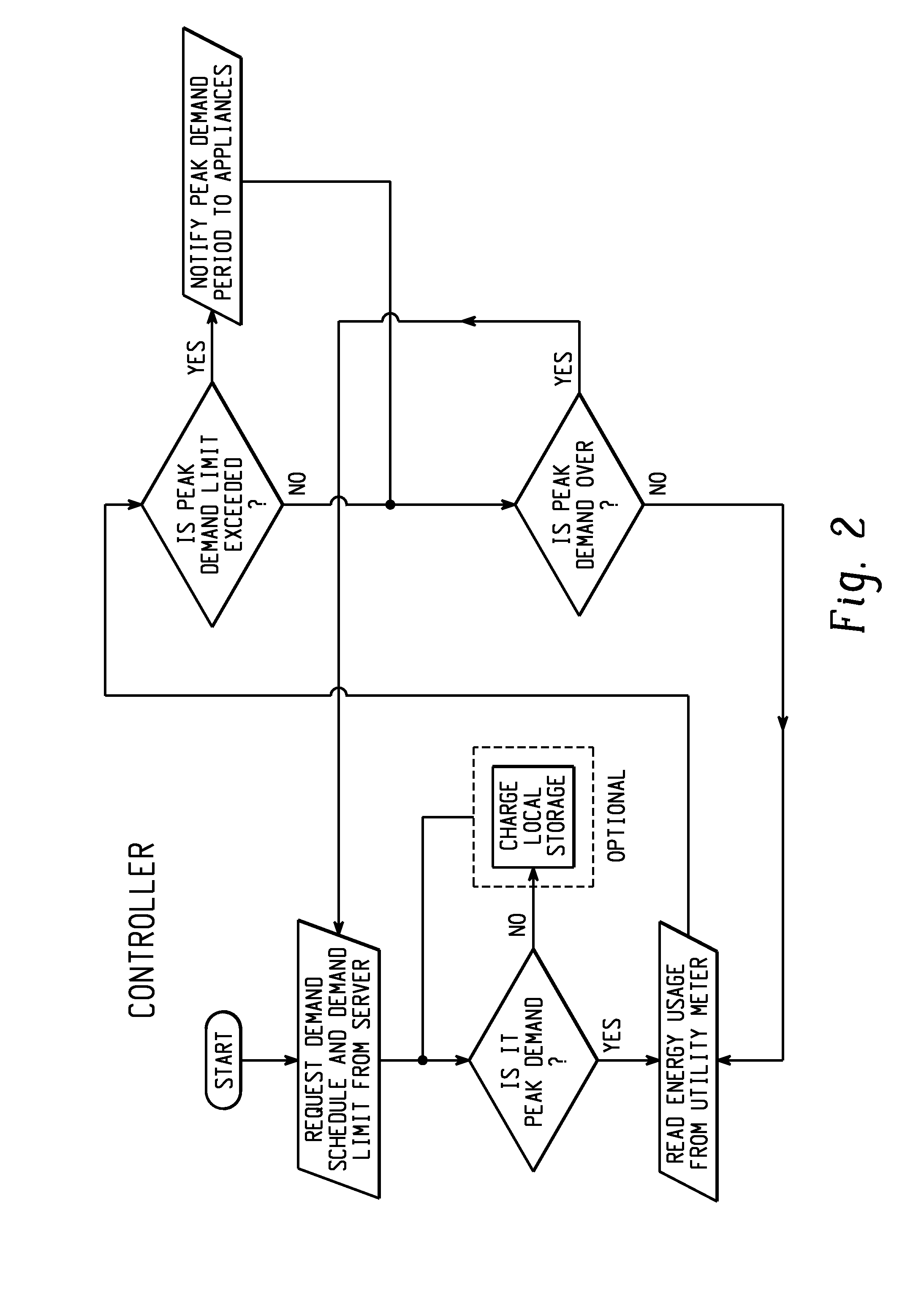Demand side management module
a technology of demand management and demand side, applied in the field of energy management, can solve the problems of no active control, no peak shaving method for an appliance such as a refrigerator will provide maximum benefit, etc., and achieve the effect of effective communication, low cost and significant savings
- Summary
- Abstract
- Description
- Claims
- Application Information
AI Technical Summary
Benefits of technology
Problems solved by technology
Method used
Image
Examples
Embodiment Construction
[0035]In one embodiment, a more advanced system is provided to handle energy management between the utility and the homeowner's appliances. The system can include one or more of the following: a controller, utility meter, communication network, intelligent appliances, local storage, local generator and / or demand server. Less advanced systems may actually allow the appliance to “communicate directly with the utility meter or mesh network through the DSSM (Demand Side Management Module) (FIG. 1). The demand server is a computer system that notifies the controller when the utility is in peak demand and what is the utility's current demand limit. A utility meter can also provide the controller the occurrence of peak demand and demand limit. The demand limit can also be set by the home owner. Additionally, the homeowner can choose to force various modes in the appliance control based on the rate the utility is charging at different times of the day. The controller will look at the energy...
PUM
 Login to View More
Login to View More Abstract
Description
Claims
Application Information
 Login to View More
Login to View More - R&D
- Intellectual Property
- Life Sciences
- Materials
- Tech Scout
- Unparalleled Data Quality
- Higher Quality Content
- 60% Fewer Hallucinations
Browse by: Latest US Patents, China's latest patents, Technical Efficacy Thesaurus, Application Domain, Technology Topic, Popular Technical Reports.
© 2025 PatSnap. All rights reserved.Legal|Privacy policy|Modern Slavery Act Transparency Statement|Sitemap|About US| Contact US: help@patsnap.com



